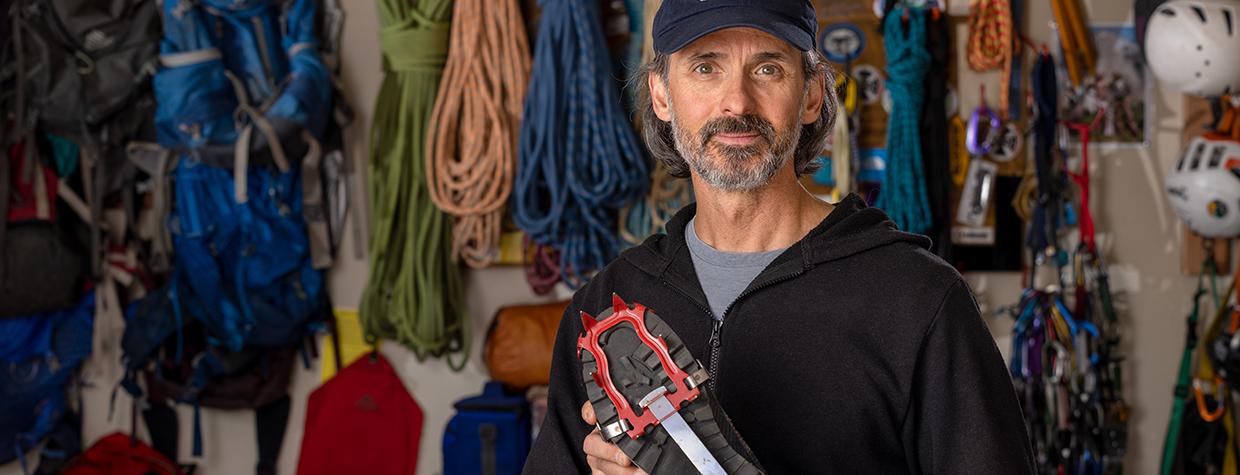A fateful fall ended up taking Danny Giovale to new heights. In 1993, he was descending Campanile Basso, a peak in Italy, with his brother when he hit icy terrain and slid hundreds of feet into a snow gully. Giovale (pictured) survived that fall and was left with motivation to avoid that type of accident — not just for himself, but also for other climbers. It was the genesis of Giovale’s Flagstaff-based company, Kahtoola.
“That’s the thing that got me going: How could I have some kind of traction product that was mountain capable, but at the same time, I’m not ice climbing, so I don’t need full crampons,” Giovale says.
Coming up with a pioneering product in the outdoor realm can be difficult because a lot of what people need has already been invented. But that wasn’t the case for Giovale — in fact, he recalls, as he was coming up with a design for his traction spikes, he realized why something like that hadn’t been created yet. “If you look at an ice climbing crampon, the engineering is really simple because they’re putting it on a rigid boot, and [that] is easy to design around,” he says. “As soon as you make that flex, which is what I wanted, you have to reimagine the whole thing.”
After a few years of experimenting with prototypes, Giovale came up with a design for what is now known as the KTS Hiking Crampon. It can attach to flexible shoes, such as those used by hikers and mountain climbers, and help with maintaining traction on snowy or icy terrain. The patented design launched in 1999, along with Kahtoola. And just four years later, Lakpa Gelu wore the crampons while setting the world speed record for climbing Mount Everest.
But Giovale didn’t want to stop at a solution for his problem; he wanted to keep helping the outdoor enthusiast community. “What has made us more worldwide is that, being in this market, we are always looking for innovations and looking for ways to serve other customers,” he says.
Among the Kahtoola products popular among the hiking and climbing community are the MICROspikes, which are made for all-terrain traction. “They apply to so many more users than those on burly mountain terrain,” Giovale says. The slip-on spikes can be used with any outdoor footwear to provide more traction on icy and snowy surfaces. They’re particularly popular among hikers heading to the Grand Canyon during the cooler months, when icy trails are a concern.
Rob Krar, an endurance athlete who once held the fastest rim-to-rim-to-rim time at the Canyon, has used Kahtoola products for several years. He says the gear allows him to do more of the things he loves — and do them safely. “There have been count-
less situations where I simply wouldn’t have felt safe without one of their traction devices under my feet,” Krar says.
“I am my best person when I am outside, whether alone in the mountains, exploring below the rim of the Grand Canyon or sharing trails with friends. Kahtoola allows me to do more of this, more often.”
Giovale hopes people use Kahtoola gear to stay safe, but they also should know the hazards of where they’re hiking or climbing. “If you’re going somewhere that has snow and ice, it’s really good to be aware and do your research because it’s not always clear what hazards are lurking,” he says.
Part of that advice comes from Giovale’s own experience during that nearly disastrous trip to Italy. He admits he didn’t do enough of his own research and ended up following the footprints of climbers who had taken the wrong path. This summer, 30 years after his accident, Giovale is hoping to rectify his mistakes by climbing the same mountain, this time armed with more information — and the Kahtoola gear he wishes he’d had for the descent back then.
Kahtoola
Flagstaff, AZ
United States

